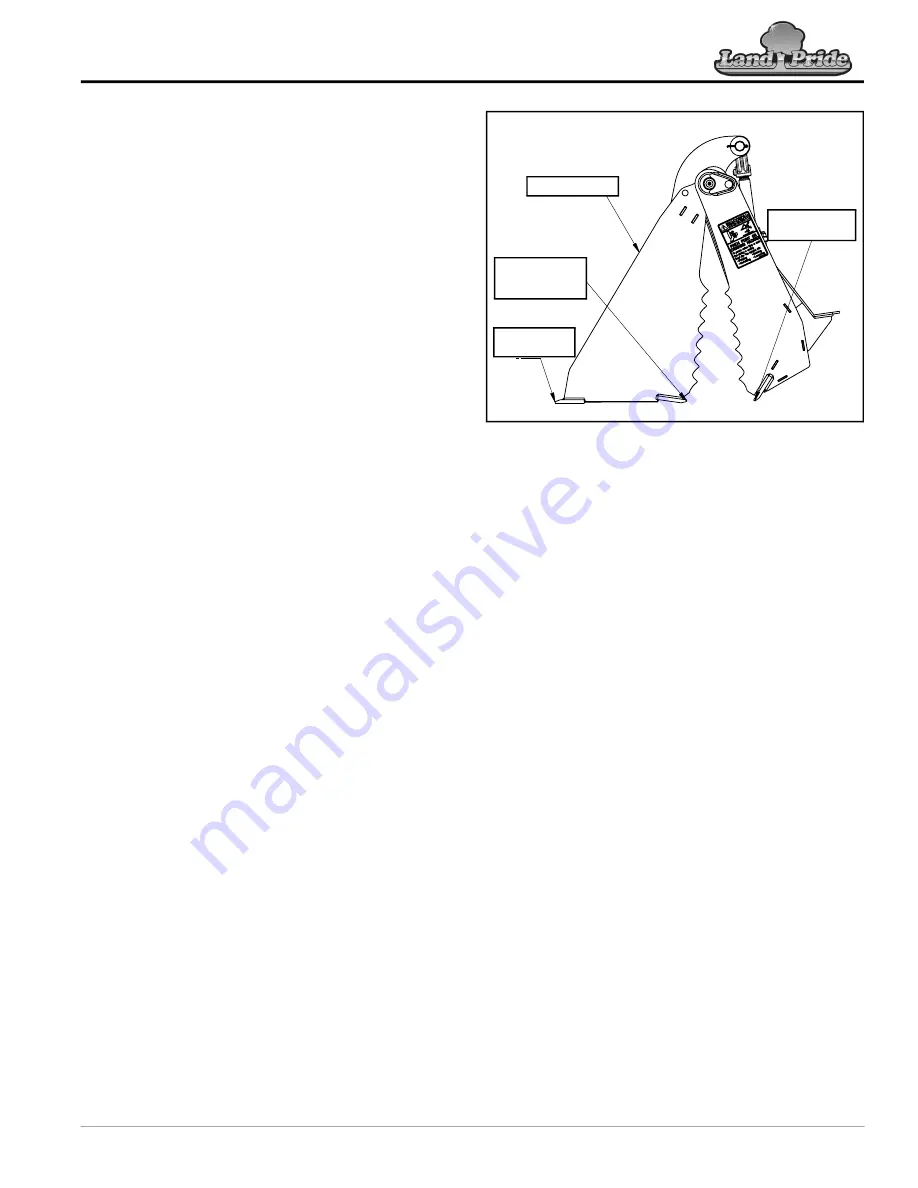
Section 2: Operating Procedures
CB0654 4-in-1 Combination Bucket 381-218M
1/3/23
17
6. Slowly back up making sure the bucket clears all
objects and no pedestrians or other traffic are behind
or on either side of the tractor.
7.
As you back away, leave enough clearance when
turning and/or lowering the bucket so that it does not
make contact with obstacles such as vehicles,
buildings, trees, fences, etc.
8. When clear of the pile, stop and lower bucket to
transporting height (low to the ground) before moving
again.
Scraping, Leveling, & Back Dragging
Refer to Figure 2-1:
1. Make a complete stop in the area to work and fully
open the jaw.
2. Rotate top of hitch plate forward and lower loader
arms down until the cutting edge of the jaw is on the
ground.
3. Begin backing up to back drag, scrape, level, or fill an
area.
4. Lower loader arms to make a deeper cut and raise
loader arms to make a shallower cut.
5. Tilt top of hitch plate as needed to angle blade for
your operation.
6. Allow excess material to discharge over the top of the
jaw when scraping and leveling.
7.
If material needs to be removed, tilt the bucket level
while raising/lowering the loader arms and closing
the jaw to capture accumulated material in the
bucket.
Dozing With The Bucket
Refer to Figure 2-1:
1. To use the dozer blade, make a complete stop in the
area to work and fully open the jaw.
2. Lower loader arms until dozer blade is on the ground.
3. Begin traveling forward pushing dirt with the dozer
blade.
4. Tilt top of hitch plate as needed to angle blade for
digging.
5. Lower loader arms to make a deeper cut and raise
loader arms to make a shallower cut.
6. If material needs to be removed, tilt the bucket level
while raising/lowering the loader arms and closing
the jaw to capture accumulated material in the
bucket.
Bucket/Jaw Cutting edges
Figure 2-1
Jaw/Clamshell
Dozer blade
with jaw open
Jaw cutting
edge used
while backing
Bucket
cutting edge
78002












































